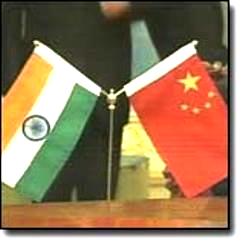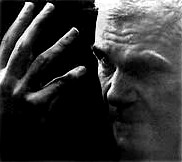 After months of research, months of procrastinating, months of distressing work (well...okay, the procrastinating took longer than working LOL)..I finally handed in my Master's Dissertation.
After months of research, months of procrastinating, months of distressing work (well...okay, the procrastinating took longer than working LOL)..I finally handed in my Master's Dissertation.
Printed, bounded, and submitted! Yup! did them all yesterday. SO RELIEVED... Well, not completety relieved though...the result would be more distressing. We'll see whether it'll be a success or a debacle.. Oh well, just wanna enjoy my temporary "freedom" for a while...
Anyways.. My research topic was about China and India. The semingly interesting debated topic among political economy and business scholars alike.. Here's the title: "The Emerging Asian Superpowers: China and India (Comparing Economic and Political Power)".
The idea was initiated from my dad's interest in the US-India-China relations, my interest in the rise of China and India, and my supervisor's ambition to do a research on a similar topic. The conclusion's idea was a contribution from a good friend. He gave a brilliant suggestion for the conclusion bit.
So...in the light of my gratefulness to people who's given lots of contributions to my work, here's the conclusion:
Conclusion: The Race of China and India
Power can be taken, but not given. The process of the taking is empowerment in itself.
-Gloria Steinem-
Superpowers status requires criteria in that the important capabilities are those of economic, politics, and military. However, this dissertation places its focus only on the economic and political power of China and India to measure their capabilities as emerging Asian superpowers. China and India have defined economic reform and political modernization projects necessary for pursuing their national interests using different approaches. Their reforms were launched at different times and were set on different paths. China is a politically closed society moving from a semi-market to a market economy while India is a politically open society slowly embracing a market economy. Yet, both countries have had the same objectives with different aims in dealing with the global political economy.
The transformation of China’s domestic economic and political structures has created a market-oriented economy while maintaining an authoritarian political system. But, this is matched by the lags of political reforms. Hence, China still faces obstacles that vary, modestly in economic reform and mainly in political transformation. The world will be watching to see how China’s authoritarian system responds to the potential internal problems to match up its rapid economic growth. India’s slow pace of economic reforms lags behind China as India launched its economic reform at about a decade later. In contrast, China’s success in combining economic dynamism with political continuity in recent decades is matched by India’s achievement in developing a stable democracy that has accommodated increasing social mobility.
Studies of comparing China and India as the emerging superpower often over-emphasize their focus only on the economic aspect and undervalue the importance of political aspect. The relationship between the political and economic processes in these very different countries is important to determine their status as emerging Asian Superpowers. It is fair to say that there is no certain answer to decide which one between China and India has more capabilities to be an Asian superpower. The accomplishments of the reforms are dwarfed only by what remains to be done because in neither country is the transformation complete. They face the internally divisive forces of ethnic unrest, economic disparities, and separatism. Moreover, both countries must confront the external challenges caused by the globalisation of technology and the international political economy. Their relationship to other major powers (i.e. the US, EU, and Japan) is important in determining their political influence to achieve international recognition as well as to obtain their national interests. It is the managing of their relationship with their own societies, between both of them, and with the other states in the international system that the competition between both giants will be measured in the coming century.
To highlight the conclusion in an analogical way, the author would make a brief comparison of “the race of China and India” inspired by the works by some authors (i.e. Sinha et al, 2004; Chow 2000) and most importantly that of Friedman whose idea compares them to “two speeding cars going along very different roads”. If the Formula One were the global political economy and its regime with a set of rules which all participants and cars must meet, the racing teams would represent China and India within which the constructors are the policy-makers who formulate the strategy based on their political ideology and economic system to deal with the race, and the drivers would be the government leaders that employ the policy. The cars would represent their economies; and the racing tracks would be their politics and societies but each country is facing different tracks. Now, Chinese car is racing along a track which is very smooth at about 140mph and India is racing on a very difficult track at a slower pace, about 100mph. The problem with the Chinese car is that somewhere along the track there is a speed bump on the track but the team does not know where it is exactly. The risk is high that it would endanger the Chinese car together with the whole team. The Indian car, although racing on a slower speed, has to cope with bouncy tracks with plenty of holes but the driver and the constructor know where they are, and will eventually manage to stay at a constant speed because of the steadier system that keeps the engine operating properly. If China can continue its success in economic reform while tackling the “speed bump” by maintaining the political system and refurbishing the national political environment, it could outperform India. In contrast, if India succeeds in deepening its reforms by moving ahead the race and keeping a constant speed, it could close the gap with China.
In essence, the national politics and economic management are highly important if a state is to embrace and successfully be suitable to interact and compete within the activities of the international political economy. If the system is to survive, national leaders and their officials have to find a vision of the future larger than the slight national interest to tackle the weaknesses and deficiencies. They need to develop a strong and reliable political system, and thus pose a strong bargaining power to maximize its economic development to gain wealth. Finally, as Gilpin states that “political considerations significantly influence and distinguish economic activities in one country” (2001, p.102), it is critical to understand that, in the study of China and India, as a result of many factors, politics is primarily important to win the race.



